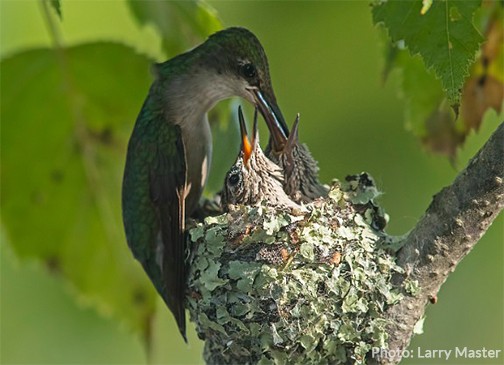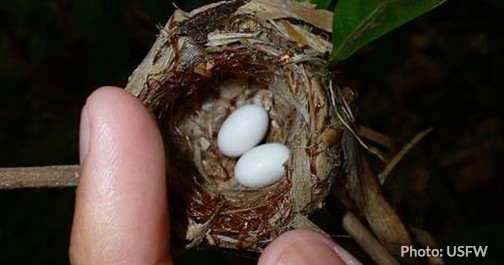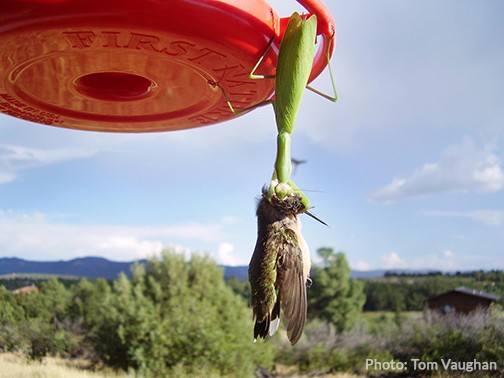How Long Do Hummingbirds Live? Discover the fascinating lifespan of these tiny creatures, the factors that influence it, and how you can help them thrive with insights from HOW.EDU.VN.
Hummingbirds, those dazzling jewels of the sky, captivate us with their vibrant colors and acrobatic flight. But beyond their beauty, a key question often arises: How long do hummingbirds live? The lifespan of a hummingbird is influenced by various elements, from genetics and habitat to the availability of food and the presence of predators. Join us as we delve into the world of hummingbird longevity, exploring what contributes to their lifespan and how you can support these amazing birds. Uncover the secrets of hummingbird survival and learn how HOW.EDU.VN can connect you with experts for more insights on avian conservation.
1. What is the Average Lifespan of a Hummingbird?
The average lifespan of a hummingbird is typically 3 to 5 years. However, some hummingbirds can live much longer, with the oldest recorded hummingbird reaching 12 years of age. While the average lifespan hovers around this range, individual lifespans are heavily influenced by environmental conditions, food availability, and the presence of predators.
1.1 What Factors Influence a Hummingbird’s Lifespan?
Several factors influence how long a hummingbird lives. Understanding these can help us appreciate the challenges these tiny creatures face:
- Genetics: Like all living organisms, genetics play a role in a hummingbird’s overall health and potential lifespan.
- Habitat: A stable and healthy habitat provides the necessary resources for survival, including food, water, and shelter.
- Food Availability: Hummingbirds require a constant supply of nectar and insects to fuel their high metabolism. Scarcity of food can significantly shorten their lifespan.
- Predation: Predators such as cats, snakes, and larger birds can pose a threat to hummingbirds, especially during nesting and migration.
- Climate: Extreme weather conditions can impact hummingbird survival rates, particularly during migration and breeding seasons.
1.2 How Does the Species Affect Lifespan?
Different hummingbird species have varying average lifespans. Here’s a brief comparison:
| Species | Average Lifespan |
|---|---|
| Ruby-Throated Hummingbird | 3-5 years |
| Anna’s Hummingbird | Up to 10 years |
| Black-Chinned Hummingbird | 4-6 years |




These variations highlight how species-specific traits and adaptations influence their ability to survive and thrive in different environments.
2. Understanding Hummingbird Mortality
Hummingbird mortality can be attributed to various factors, both natural and human-induced. Recognizing these threats is crucial for conservation efforts.
2.1 What are the Natural Threats to Hummingbirds?
Natural threats to hummingbirds include:
- Predators: Snakes, spiders, praying mantises, and larger birds can prey on hummingbirds, especially nestlings and fledglings.
- Disease: While less common, diseases and parasites can affect hummingbird populations, particularly in areas with poor habitat quality.
- Starvation: Lack of food sources, especially during migration or breeding seasons, can lead to starvation and death.
- Weather: Extreme weather events such as hurricanes, droughts, and cold snaps can significantly impact hummingbird survival rates.
2.2 What Human Activities Endanger Hummingbirds?
Human activities pose significant threats to hummingbird populations:
- Habitat Loss: Deforestation, urbanization, and agricultural expansion destroy hummingbird habitats, reducing their access to food and shelter.
- Pesticide Use: Insecticides can eliminate the insects that hummingbirds rely on for protein, leading to malnutrition and death.
- Climate Change: Altered migration patterns and mismatches between flowering times and hummingbird arrival times can disrupt their food supply.
- Collisions: Hummingbirds can collide with windows, cars, and other human-made structures, resulting in injury or death.
2.3 How Does Climate Change Affect Hummingbird Lifespan?
Climate change has a profound impact on hummingbird lifespan by disrupting their natural cycles and habitats. Rising temperatures and altered precipitation patterns can affect:
- Migration: Changes in temperature and flowering times can cause hummingbirds to migrate at the wrong time, leading to exhaustion and starvation.
- Food Availability: Climate change can disrupt the timing of flower blooms, making it difficult for hummingbirds to find nectar when they need it most.
- Habitat Quality: Extreme weather events can damage or destroy hummingbird habitats, reducing their access to food, water, and shelter.
3. Detailed Look at the Life Stages of a Hummingbird
Hummingbirds go through several distinct life stages, each with its own challenges and opportunities for survival.
3.1 What is the Nesting Period Like for Hummingbirds?
The nesting period is a critical time for hummingbirds, as the survival of the young depends on the mother’s ability to build a safe nest and provide adequate care. Key aspects of the nesting period include:
- Nest Building: Female hummingbirds build tiny, cup-shaped nests out of soft materials like plant fibers, moss, and spiderwebs.
- Egg Laying: They typically lay two tiny, white eggs, each about the size of a pea.
- Incubation: The female incubates the eggs for 14-21 days, keeping them warm and protected.
- Hatchlings: Newly hatched hummingbirds are tiny and helpless, relying entirely on their mother for food and warmth.
3.2 How Long Do Baby Hummingbirds Stay in the Nest?
Baby hummingbirds, also known as nestlings, remain in the nest for approximately 3 weeks. During this time, the mother feeds them regurgitated insects and nectar, providing the necessary nutrients for rapid growth.
3.3 What Happens When a Hummingbird Fledges?
Fledging occurs when the young hummingbirds leave the nest and begin to explore their surroundings. This is a vulnerable time, as they are still learning to fly and forage for food. The mother continues to provide support, but the fledglings must quickly become independent to survive.
3.4 What is the Role of Migration in a Hummingbird’s Life Cycle?
Migration is a crucial aspect of a hummingbird’s life cycle, allowing them to exploit seasonal food sources and breeding opportunities. Key points about hummingbird migration include:
- Timing: Hummingbirds typically migrate in the spring and fall, following the availability of nectar-rich flowers.
- Distance: Some species, like the Ruby-Throated Hummingbird, travel thousands of miles between their breeding and wintering grounds.
- Challenges: Migration is a demanding process, requiring significant energy reserves and the ability to navigate long distances.
4. How to Help Hummingbirds Live Longer
Supporting hummingbird populations involves creating and maintaining habitats that provide the resources they need to thrive.
4.1 What Types of Plants Attract Hummingbirds?
Planting native, nectar-rich flowers is one of the best ways to attract hummingbirds to your yard. Some top choices include:
- Bee Balm (Monarda): A favorite among hummingbirds, bee balm produces vibrant red or pink flowers that are rich in nectar.
- Salvia: With its long-blooming spikes of colorful flowers, salvia is a reliable source of nectar throughout the growing season.
- Trumpet Vine (Campsis radicans): This vigorous vine produces trumpet-shaped flowers that are highly attractive to hummingbirds.
- Fuchsia: With its delicate, drooping flowers, fuchsia adds a touch of elegance to any garden and provides a valuable source of nectar.
4.2 How Do You Maintain a Hummingbird Feeder?
Providing a hummingbird feeder can supplement natural food sources, especially during times of scarcity. Follow these tips for maintaining a hummingbird feeder:
- Recipe: Mix 1 part white sugar with 4 parts water, and boil the mixture to dissolve the sugar. Let it cool completely before filling the feeder.
- Cleaning: Clean the feeder every 2-3 days, especially in hot weather, to prevent mold and bacteria growth.
- Location: Place the feeder in a shady spot to prevent the nectar from fermenting in the sun.
- Avoid Additives: Do not add honey, artificial sweeteners, or food coloring to the nectar, as these can be harmful to hummingbirds.
4.3 What Else Can You Do to Protect Hummingbirds?
In addition to planting flowers and providing feeders, there are several other ways you can help protect hummingbirds:
- Reduce Pesticide Use: Avoid using pesticides in your yard, as they can harm hummingbirds and eliminate their food sources.
- Provide Water: Offer a shallow dish of water or a gentle mist for hummingbirds to drink and bathe in.
- Protect Habitats: Support conservation efforts to protect and restore hummingbird habitats.
- Prevent Window Collisions: Use window clings or decals to prevent hummingbirds from colliding with windows.
5. Interesting Facts About Hummingbird Lifespan
Explore these fascinating facts about hummingbird lifespan and behavior.
5.1 How Do Hummingbirds Survive Cold Weather?
Hummingbirds use several strategies to survive cold weather:
- Torpor: They can enter a state of torpor, similar to hibernation, to conserve energy and reduce their metabolic rate.
- Migration: Many species migrate to warmer climates during the winter months.
- Shelter: They seek shelter in dense vegetation or tree cavities to protect themselves from the cold.
5.2 Can Hummingbirds Remember Feeding Spots?
Yes, hummingbirds have excellent memories and can remember the locations of reliable food sources, including flower patches and feeders. They can also remember migration routes and return to the same breeding and wintering grounds year after year.
5.3 What is the Oldest Recorded Hummingbird?
The oldest recorded hummingbird was an Anna’s Hummingbird that lived to be over 12 years old. This remarkable bird was banded as an adult and recaptured several years later, providing valuable data on hummingbird longevity.
6. Expert Insights on Hummingbird Conservation
Gain expert insights on hummingbird conservation and how you can contribute to their survival.
6.1 How Do Scientists Study Hummingbird Lifespan?
Scientists use various methods to study hummingbird lifespan and behavior, including:
- Banding: Attaching small, lightweight bands to hummingbirds’ legs to track their movements and survival rates.
- Tracking: Using GPS trackers to monitor hummingbird migration patterns and habitat use.
- Observation: Conducting field studies to observe hummingbird behavior, nesting habits, and feeding preferences.
6.2 What are the Biggest Challenges in Hummingbird Conservation?
The biggest challenges in hummingbird conservation include:
- Habitat Loss: Protecting and restoring hummingbird habitats in the face of increasing development and deforestation.
- Climate Change: Mitigating the impacts of climate change on hummingbird migration and food availability.
- Pesticide Use: Reducing the use of pesticides that harm hummingbirds and their food sources.
6.3 How Can Citizen Scientists Contribute to Hummingbird Research?
Citizen scientists can play a valuable role in hummingbird research by:
- Monitoring Feeders: Tracking hummingbird visits to feeders and reporting the data to researchers.
- Participating in Surveys: Joining organized surveys to count hummingbird populations and assess habitat quality.
- Reporting Sightings: Reporting sightings of banded hummingbirds to help track their movements and survival rates.
7. Debunking Common Myths About Hummingbird Lifespan
Let’s address some common misconceptions about hummingbird lifespan and behavior.
7.1 Do Hummingbird Feeders Prevent Migration?
No, hummingbird feeders do not prevent migration. Hummingbirds migrate based on instinct and changes in daylight hours, not on the availability of food. It is perfectly safe to leave your feeder up throughout the migration season to provide supplemental food for traveling hummingbirds.
7.2 Are Hummingbirds Always Solitary Creatures?
While hummingbirds are often solitary, they can be social in certain situations, such as when feeding at a large patch of flowers or at a well-stocked feeder. Some species also form loose flocks during migration.
7.3 Can Hummingbirds Survive Without Feeders?
Yes, hummingbirds can survive without feeders, as long as they have access to natural food sources such as nectar-rich flowers and insects. However, feeders can provide a valuable supplement, especially during times of scarcity or when hummingbirds are migrating or breeding.
8. The Future of Hummingbird Lifespan
The future of hummingbird lifespan depends on our ability to address the challenges they face and protect their habitats.
8.1 What Conservation Efforts are Currently Underway?
Various conservation efforts are underway to protect hummingbirds, including:
- Habitat Restoration: Restoring degraded habitats and planting native, nectar-rich flowers.
- Protected Areas: Establishing protected areas to safeguard important hummingbird habitats.
- Education and Outreach: Educating the public about hummingbird conservation and how they can help.
8.2 How Can We Ensure a Healthy Future for Hummingbirds?
To ensure a healthy future for hummingbirds, we must:
- Reduce Our Impact: Minimize our impact on hummingbird habitats by reducing deforestation, pesticide use, and climate change.
- Support Conservation: Support organizations and initiatives that are working to protect hummingbirds and their habitats.
- Educate Others: Educate others about the importance of hummingbird conservation and how they can help.
8.3 What Role Does Sustainable Gardening Play?
Sustainable gardening plays a crucial role in hummingbird conservation by providing a safe and healthy environment for these amazing birds. By planting native flowers, avoiding pesticides, and providing water, you can create a hummingbird-friendly garden that supports their survival and well-being.
9. Connecting with Experts on Hummingbird Biology at HOW.EDU.VN
For those seeking deeper knowledge and expert guidance on hummingbird biology, HOW.EDU.VN provides a unique platform.
9.1 How Does HOW.EDU.VN Connect You with Avian Experts?
HOW.EDU.VN connects you with leading avian experts who can provide:
- Personalized Advice: Tailored advice for creating hummingbird-friendly habitats in your specific region.
- Advanced Insights: Access to cutting-edge research and conservation strategies.
- Educational Resources: A wealth of resources to deepen your understanding of hummingbird behavior and ecology.
9.2 What Expertise Can You Find on HOW.EDU.VN?
On HOW.EDU.VN, you can find experts specializing in:
- Avian Ecology: Understanding the interactions between hummingbirds and their environment.
- Conservation Biology: Developing strategies to protect and restore hummingbird populations.
- Sustainable Gardening: Creating gardens that support hummingbird health and biodiversity.
9.3 How Can Personalized Consultations Improve Hummingbird Conservation Efforts?
Personalized consultations with experts can significantly improve hummingbird conservation efforts by:
- Targeted Strategies: Developing conservation strategies tailored to specific needs and challenges.
- Effective Solutions: Implementing solutions that are both practical and scientifically sound.
- Community Engagement: Engaging local communities in conservation efforts to ensure long-term sustainability.
10. Call to Action: Support Hummingbird Conservation
You’ve learned about the lifespan of hummingbirds, the threats they face, and how to help them thrive. Now, take action to support hummingbird conservation and ensure these amazing birds continue to grace our skies for generations to come.
10.1 Practical Steps to Take Today
Here are some practical steps you can take today:
- Plant Native Flowers: Create a hummingbird-friendly garden by planting native, nectar-rich flowers.
- Maintain a Feeder: Provide a clean, well-maintained hummingbird feeder with fresh nectar.
- Reduce Pesticide Use: Avoid using pesticides in your yard to protect hummingbirds and their food sources.
- Support Conservation: Donate to organizations that are working to protect hummingbirds and their habitats.
- Educate Others: Share your knowledge about hummingbird conservation with friends, family, and neighbors.
10.2 Contact HOW.EDU.VN for Expert Advice
For personalized advice and expert guidance on hummingbird conservation, contact HOW.EDU.VN today. Our team of avian experts can provide tailored solutions to help you create a hummingbird-friendly environment and support their survival.
10.3 Why Consult with a Doctor of Avian Biology?
Consulting with a Doctor of Avian Biology ensures that you receive the most accurate, up-to-date, and effective strategies for hummingbird conservation. Their expertise can help you:
- Identify Challenges: Accurately identify the specific challenges facing hummingbirds in your area.
- Implement Solutions: Implement solutions that are tailored to your unique circumstances.
- Achieve Results: Achieve measurable results in your hummingbird conservation efforts.
Ready to make a difference?
Connect with our team of over 100 renowned Doctors at HOW.EDU.VN and receive personalized guidance to support hummingbird conservation. Whether you’re facing challenges in creating a suitable habitat, need advice on protecting hummingbirds from local threats, or want to contribute to conservation efforts, our experts are here to help.
Contact us today:
- Address: 456 Expertise Plaza, Consult City, CA 90210, United States
- WhatsApp: +1 (310) 555-1212
- Website: HOW.EDU.VN
Let’s work together to ensure a thriving future for hummingbirds.
FAQ About Hummingbird Lifespan
1. What is the average lifespan of a hummingbird in the wild?
The average lifespan of a hummingbird in the wild is 3 to 5 years, though some can live longer.
2. What factors affect how long a hummingbird lives?
Factors include genetics, habitat quality, food availability, predation, and climate conditions.
3. Do hummingbird feeders extend a hummingbird’s life?
Feeders can supplement natural food sources, potentially increasing survival, especially during scarcity.
4. What are some natural predators of hummingbirds?
Snakes, spiders, praying mantises, and larger birds can prey on hummingbirds.
5. How does climate change impact hummingbird lifespan?
Climate change disrupts migration patterns and food availability, affecting their survival.
6. Can humans help extend hummingbird lifespan?
Yes, by planting native flowers, maintaining feeders, reducing pesticide use, and supporting conservation efforts.
7. How long do baby hummingbirds stay in the nest?
Baby hummingbirds stay in the nest for about 3 weeks.
8. Do hummingbirds migrate, and how does this affect their lifespan?
Yes, migration is a challenging journey requiring significant energy, impacting survival rates.
9. What is torpor, and how does it help hummingbirds survive?
Torpor is a state of reduced metabolic activity that helps hummingbirds conserve energy in cold weather.
10. How can I get expert advice on helping hummingbirds live longer?
Contact how.edu.vn to connect with avian experts for personalized advice and guidance.